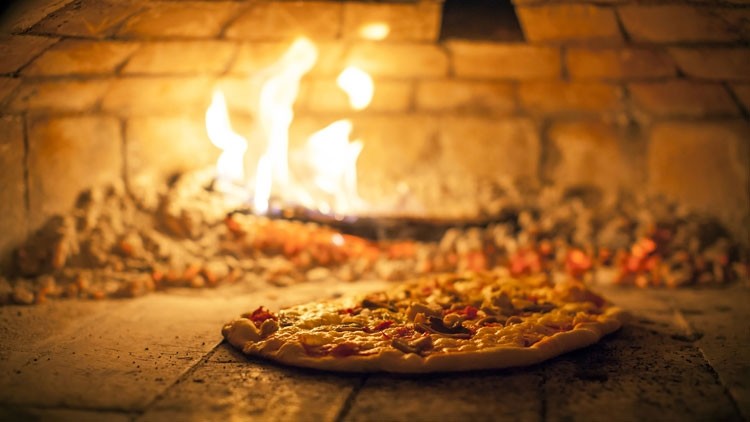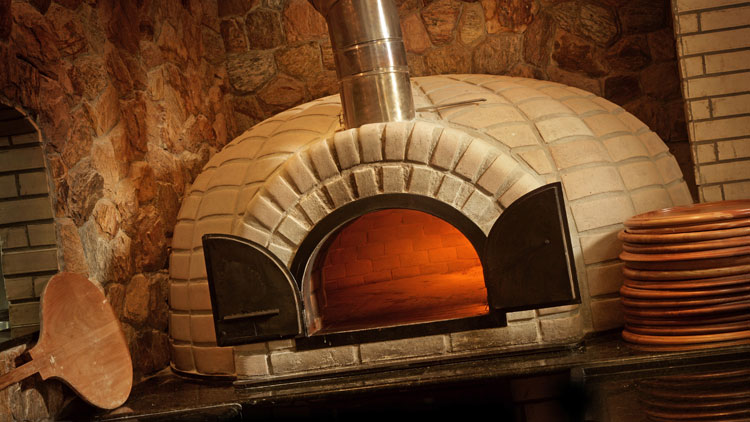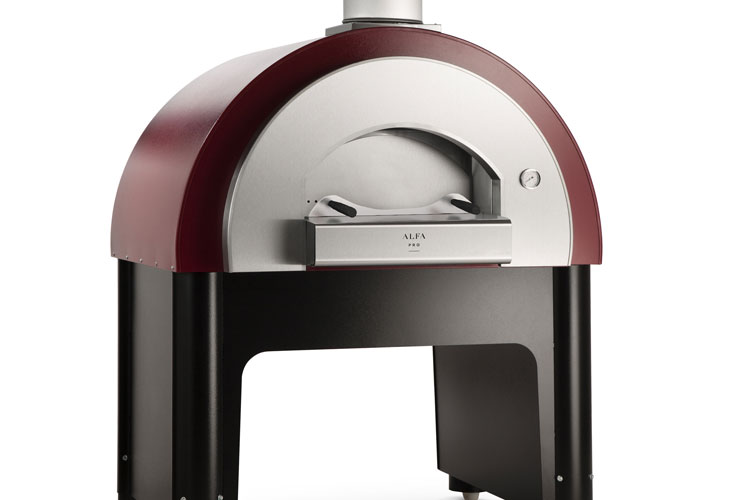The hearth of least resistance

Wood, gas or electric?
This is the most fundamental question for buyers looking at traditional stone-based pizza ovens. With the explosion of Neapolitan pizza joints in recent years you’d think wood-burning ovens would now dominate, but this is not the case according to Jestic culinary director Michael Eyre. “The guidelines for solid fuel cooking are making things tricky. The majority of our customers now opt for gas. Of course, there are always people who are going to want to use wood as that’s the traditional thing to do when it comes to Neapolitan pizza, but it’s generally only the specialist places.”
The key advantage of wood-burning ovens is the theatre and the fact they can generally reach higher temperatures than their gas and electric counterparts (up to 500 degrees). Purists also believe that the drier air created by the wood results in a better quality pizza. The Associazione Verace Pizza Napoletana states that Pizza Napoletana must be cooked in a wood-burning oven.
Eyre believes that gas-fired ovens offer 80% of the quality of a wood-fired oven, alongside major practical benefits including lower running costs (around 50%), far simpler operation, better temperature control, no need to store wood, no need to dispose of ash, and better safety features (see Ventilation).
Electric ovens are still popular with chains and normally have multiple decks, meaning that running costs can be reduced at quieter times of day. Another option is an oven that’s heated using a combination of wood and gas, with the former providing taste and theatre and the latter providing an easy means to regulate the temperature. Higher-powered ovens are generally good news for quality but are more expensive to run. More moderately powered ovens are cheaper to run and easier to use.
Ventilation
By law, wood ovens must have a dedicated flue. Flues and their associated ducting must be cleaned regularly to avoid potentially devastating fires. As well as grease from toppings, wood-fired pizza ovens also produce creosote which is also highly flammable. Wood-burning oven owners must source either briquette logs or very dry (ideally kiln-dried) wood. The higher the moisture content, the more smoke and creosote is produced and the less efficiently the wood burns.
DEFRA’s Smoke Control Areas are a big issue for pizza restaurants, but can be largely side-stepped by choosing the right kit and operating it properly. The Government department approves wood-burning pizza ovens that get hot enough to incinerate smoke particles at the top of the dome. Restaurants must ensure they are running the oven at the correct temperature and using wood that’s fit for purpose to avoid fines.
Ventilation is essential for gas ovens, too, but is more straightforward. Like all gas appliances, they will need to have an interlock that cuts off the gas if the extraction system goes down. Some electric ovens have built-in extraction systems, meaning they can be installed in kitchens that don’t have extraction.
Capacity
Capacity is expressed by pizzas per hour. It’s as simple as looking at the total number of pizzas the oven can fit, how long they take to cook, and how long it takes to fill and unload the oven. “We would always recommend a customer buys an oven that is capable of handling their busiest times,” advises Eyre. Fast cooking of around a minute allows Neapolitan pizza places to get through a high number of orders using a relatively small oven, although a skilled team is needed to make the most of the oven’s speed.
Electric ovens remain popular with the big pizza chains because they provide the largest capacity in the smallest space and require less skill to use efficiently. They are often used in tandem with pizza pans that smooth logistics by allowing bases and pizzas to be prepared in advance. Most triple-deck electric ovens can take around 36 pizzas at one time, equating to an output of around 500 pizzas per hour.
Built-in versus readymade
The new breed of Neapolitan-style pizza operators – most notably Franco Manca and Pizza Pilgrims – are building pizza ovens into their restaurants brick by brick. These custom-made appliances can be a real style statement, but require significant expertise that’s typically brought over from southern Italy at considerable cost. Handmade ovens have to be cured slowly to dry them out and the – rather obvious – disadvantage is that they can’t be moved or sold on once installed. If done properly they can last for hundreds of years (yes hundreds, many of Naples’ most famed pizza restaurants have had the same ovens since their inception). The advantage of a pizza oven assembled in a factory is that it’s more or less the same every time and can usually be uninstalled fairly easily. “Hand-built pizza ovens are only as good as the person who built them. It’s not something to get involved in if you don’t know what you’re doing,” says Eyre.
Other types of pizza oven
Stone-based ovens aren’t the only game in town. High-volume takeaway and delivery operations tend to favour conveyor ovens, which pull pizzas through a heated chamber, meaning multiple pizzas can be cooked one after another with very consistent results. They’re easy to use but their large proportions make them unsuitable for smaller spaces and they’re inefficient if not constantly in use.
As one would expect, barbecue ovens are designed for outdoor use. They tend to be smaller than indoor pizza ovens and generally won’t be suitable for operations where pizza is the main event. Finally, accelerated cooking ovens or rapid cooking ovens use high-tech impingement cooking technology to cook pizza at speeds similar to a wood-burning oven and are typically favoured by food-to-go operations. They tend to have a small footprint and are usually designed to cook just one or two pizzas at a time.
The Insider - Steve Morris
Sales director, Jestic Foodservice Equipment
What are the key trends to be aware of?
Open-plan kitchens and front of house cooking means that visible pizza ovens are now a common sight across the industry, particularly in the Italian dining scene. Restaurants are opting to enhance pizza’s appeal by adding theatre to the cooking process, engaging customers in the wider dining experience with the sights, smells and tastes of great pizza.
What are the key types of pizza ovens?
There are three main types of pizza ovens: wood or gas-fired stone hearth ovens, electric deck ovens and conveyor ovens. Stone hearth ovens are available in a range of different sizes, designs, capacities and powers and produce wonderful pizzas with an authentic stone-fired taste. Electric deck ovens are generally behind the scenes, but are the preferred choice for operators looking for consistency, versatility and capacity in a smaller footprint.
What should buyers consider?
Buying a pizza oven can be a significant investment so operators need to consider a number of factors before making a purchase. Firstly, there are questions in relation to the premises. How much space do you have? And do you want your pizza oven front of house or can it remain out of sight in the kitchen? Operational considerations are equally important, such as what fuel source do you intend to use and do you have the necessary extraction in place? Do your chefs have the skills to get the best out of the oven? Can the oven deliver the consistency and speed of bake for your site, and is it able to meet capacity during peak hours?
Tell us about Jestic’s pizza brands...
We are the exclusive distributor for Wood Stone, the leader in commercial grade stone hearth, wood and gas-fired pizza ovens for more than 25 years. Our Sveba-Dahlen range of electric deck ovens are extremely energy-efficient and therefore economical, while those in the Alfa Pro range are lightweight yet durable commercial ovens that feature unique, patented Forninox™ technology with true Italian design and quality at their core. Finally, our Edge Ovens are the highest quality, most energy-efficient conveyor ovens in the marketplace.
This is a web version of an article that first appeared in the August issue of Restaurant magazine, the leading title for the UK's restaurant industry. For more features, comment, interviews and in-depth analysis of the restaurant sector subscribe to Restaurant magazine here.
































